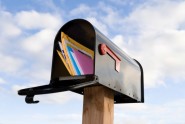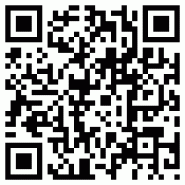Finding new customers for your products and services can be a challenge at any time, but in today’s economic environment, it can be even more critical to the health and well-being of your company. Smart marketers are continually on the lookout for effective methods that will bring new leads into their sales cycle funnel. The challenge for businesses today is the same as it has always been:
- Find new, profitable customers.
- Communicate, educate, nurture, and serve them.
- Build a bond and relationship so they continually come back to you.
The difference today is that marketing budgets are getting cut to the bone, making it more difficult to recover from a dud campaign. So finding a cost-effective return on your ad spend investment is especially important. There can be no denying the compelling case made by the new tools of search engine marketing, email marketing, and social media marketing. However, in the frantic search for cost-effective marketing, it’s easy to forget one of the most powerful tools still available to you: direct mail. Dollar for dollar, direct-mail marketing, when done correctly, results in more sales than any other marketing medium available. You may be able to get in front of more eyeballs with Google, Facebook, Twitter, and email blasts, but if the majority of those are not interested in your products or services, really how cost-effective is that?
As the shiny-new-object feel of online and social media are starting to wear off, more marketers are demanding proof of ROI. New media companies have been feverishly trying to figure out how to solve the problem of getting your message in front of a relevant audience. There have been improvements, but there is still a long way to go. In reality, they are trying to solve a problem that direct-mail marketing solved a long time ago. What may have been forgotten (or maybe never learned) is that just like with anything else worthwhile in life, a successful direct-mail campaign requires real homework. There is no simple “Send” button. It requires thinking, and in today’s immediate gratification, microwave oven, frantic world, this is a tougher proposition.
A successful direct-mail campaign is not as daunting or difficult as it may seem. It requires a pen and paper (remember those!), some data, quiet time, and your brain. Here are the basic steps involved:
Step1: Take a look at your existing customer database. Find out who your best current customers are. Learn as much as you can about them: what industries they are in, the size of their company, how many years they have been in business, their approximate sales per year, etc. The more data you can find, the better.
Step 2: Pick one or two out of those customers, and think about why they are using your services. It is best if you can call them or invite them to coffee and ask them directly. Tell them exactly why you are asking (because you want more customers just like them). Most people would be honored to hear this and will share a lot of very useful info with you. Ask them questions and listen to their answers. You want to find out not only why they are using your company but also what their concerns are and what keeps them up at night (in relation to the types of products and services you sell).
Step 3: Based on your findings, create a direct-mail piece that clearly answers the concerns of your target audience. The piece needs to be visually appealing and have a clear call to action (call you, take advantage of a special discount, come see you, go to your website… you get the point). Don’t hide or bury this call to action. Make it very easy to find.
Step 4: Now it is time to find contact information for more of the types of people you identified in step one. This is where direct mail really shines and where it holds a big advantage over all other media. With the huge amount of very detailed data compiled on businesses and consumers, you can find just about any type of mailing list imaginable with a little effort. Your goal here is to find characteristics and demographics that most closely match your best current customers.
Step 5: When you reach the right prospects at the right time with the right type of message, your mail is not “junk mail.” It is actually as close as you can get to legally printing money!
Repeat the above steps as often as your budget allows. It’s best to mail monthly or at least quarterly. Not every prospect on your list is ready to buy today, but if you mail consistently, you can bet they will remember you because you made the effort to stay top of mind. If your budget is tight right now, mail to fewer prospects until your budget grows. But don’t wait!
The point here is not to demean or belittle other forms of advertising and marketing. It is just a reminder not to forget about one of the most powerful tools you have in your marketing arsenal. It is not shiny or new, but it is proven, effective, and extremely powerful if used correctly.









